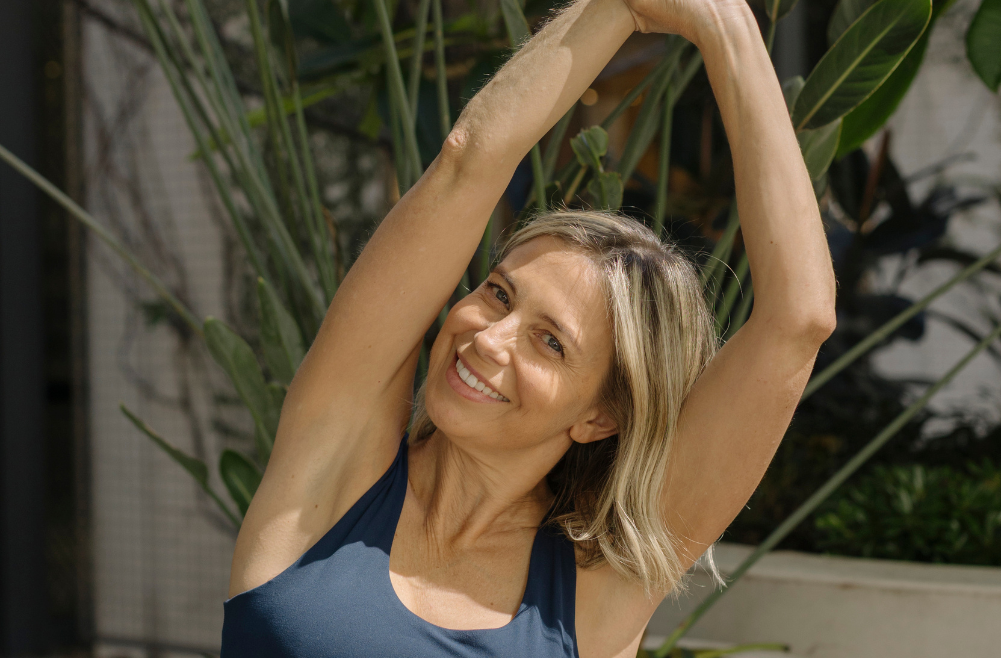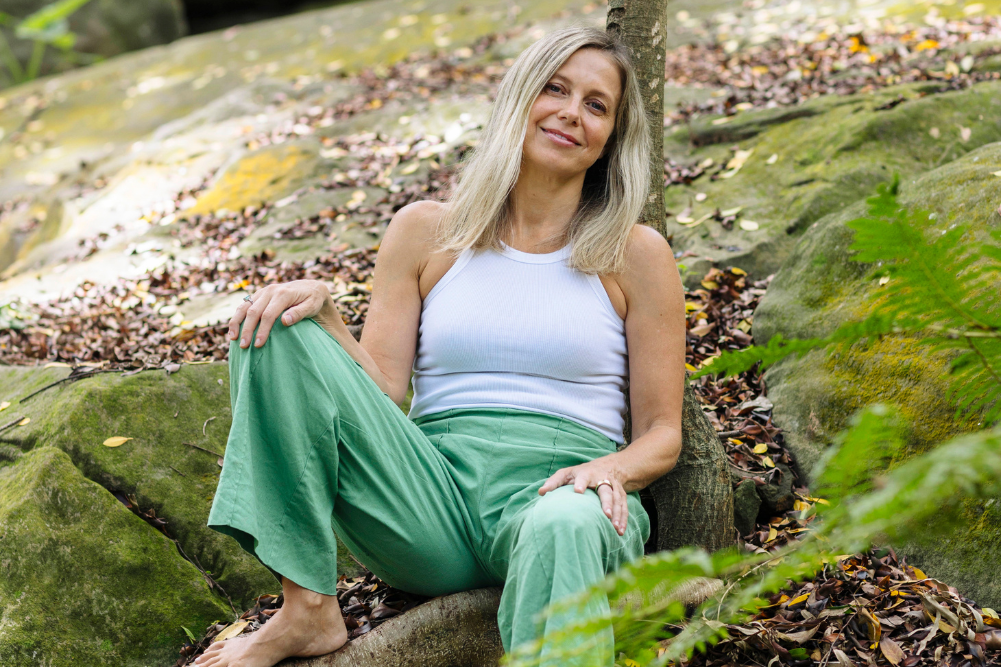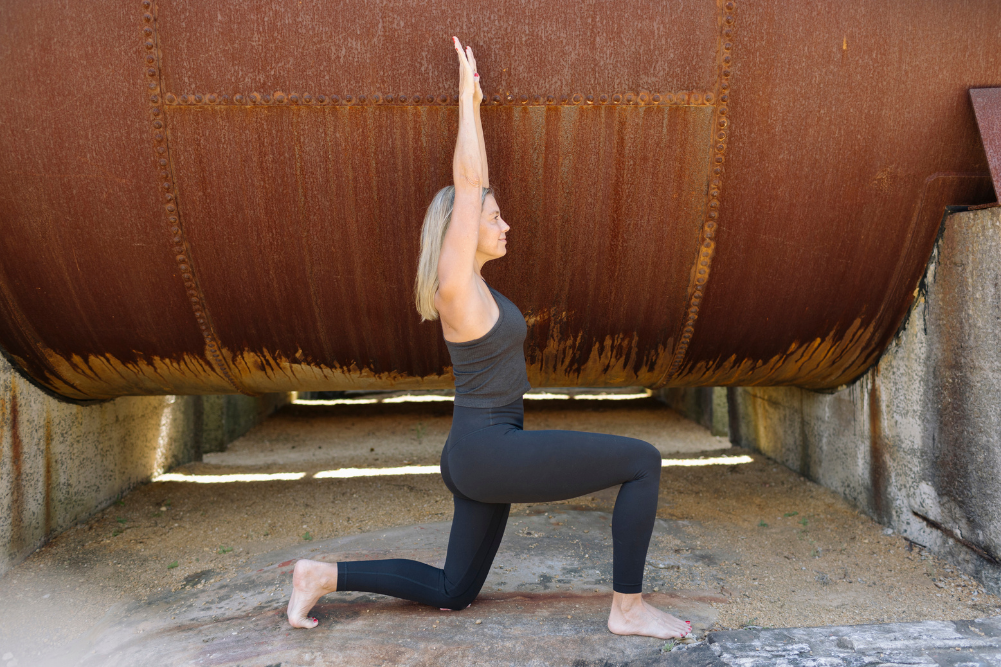Yoga for sex
In the modern world sex is everywhere. Sex sells and is big business. Sex is splashed across almost every screen and billboard you see. It feels good to be sexy, to be desired. Yet sex sold in the spirit of raunchy fun is without the intimacy the soul longs for.
The pervasive cheapening of the sacredness of sex in society leaves many feeling empty and spiritually void in their sexual relationships. One path to deeply satisfying sexual experiences and genuine love from intimacy is through your sacred yoga journey.
Brahmacharya: connecting with the divine self
In the classic yogic text The Yoga Sutras of Patanjali, one key ethical principle is brahmacharya. This is usually translated as sexual abstinence. Yogic celibates take a vow not to engage in any sexual practices in thought, word and deed in order to redirect the powerful sexual life energy for spiritual purity rather than lose it through ejaculation. Yet there is another way.
Katie Manitas of Jivamukti Yoga interprets brahmacharya as not harming another through your sexual activities. Donna Fahri (Yoga Mind, Body & Spirit) translates the concept as an energy exchange or merging energies with God, “a kind of omnidimensional celebration of Eros in all forms”. Heart of Yoga’s Mark Whitwell asserts that life is about making use of desire, not suppressing it. In The Promise: Love, Sex and Intimacy, he teaches, “Your Seven-Minute Wonder: a gentle pranayama (breathing) practice with simple asanas (postures), promising greater intimacy in all relationships, especially your sexual relationship, when performed daily for three months.”
From this perspective, brahmacharya shows you how to use your sexual energy, making it a consciously joyful act. You can apply all other yamas and the niyamas to this key ethical concept in thought, word and deed. Apply:
- Ahimsa (non-harming) through self acceptance and compassion in sex
- Satya (truthfulness) through honest communication of each other’s needs
- Asteya (not stealing) by respecting someone’s sexual boundaries
- Aparigraha (not grasping) in your sexual desires
- Shaucha (purity) through cleanliness and simplifying clutter, to allow the sacred to be felt
- Santosha (contentment) in sex and sexual partners
- Tapas (burning enthusiasm) so sexual desire doesn’t wane, especially when career, children or hobbies take over
- Swadhyaya (self-study) as self-reflective consciousness in sex
- Ishvarapranidhana (celebration of the spiritual) through devotion in love making
You can take each of these ethical precepts separately and explore them deeply through your sexuality and sexual responses to life.
Yoga for sex
An authentic yoga practice of asana, pranayama and dhyana (meditation) can remove barriers that prevent you from connecting with your own divinity. Yoga is not about striving for an end goal or forcing yourself beyond what you are ready for; neither is a deeply satisfying spiritual-sexual experience with someone you love.
In yoga practice, if you surrender to the present moment, practise joyfully without judgment, challenge yourself safely and allow the breath to move you closer to knowing the universal self, you can move into lasting peace and happiness. Sex can do the same while providing an intimate and joyful connection with your partner (or yourself) as a divine human connection and expression of love.
When you approach sex with conscious awareness and become mindful in every moment, you let go of striving for sexual performance and instead become open and generous in the spirit of what you can offer each other. In this act of offering without expectation, you transcend cultural sexual dysfunction and allow the loving act of sex to become a yoga practice in itself, developing awareness, respect and intimacy.
Senior hatha yoga teacher Eve Grzybowski talks of the humility and devotion to the relationship a commitment to sexual union brings, particularly after an argument. Someone has to surrender, she says. A sexual relationship based on devotion, generosity and mental flexibility improves all other relationships in your life.
Going solo
If you are not in a loving sexual relationship with another, you can still use these guidelines by yourself. Get to know your desires, likes and dislikes. Use the breath to find intimacy with the self through asana and pranayama in preparation for a deeper sexual connection with a partner if/when the time comes.
Mark Whitwell says life is not about seeking enlightenment or something outside of yourself, but becoming intimate with the divine self that is already perfect within you. He says intimacy with another is not possible until you experience intimacy with your own life, “with your own body and breath”.
Tantra
Diane Riley of the Australian School of Tantra explains tantra as a way of life. Combining the heat of the genitals with the warmth of the heart and the cool bliss of meditation, tantra integrates all aspects of yourself. Tantric practices are about giving and receiving sexual energy for more soulful sex.
Riley teaches couples in her Love Works program how to combine the body, heart, mind and soul within yourself, then with your partner through lovemaking. A sense of timelessness and boundlessness, and a deep connection with all things can occur.
In preparation for sex Riley suggests you:
- Set a sacred space for lovemaking.
- Become present with each other through the breath.
- Devote and set an intention.
- Connect and open at the heart, verbalising words of love.
- Practise passionate sexual embrace.
- Commune ecstatically in body, heart and soul.
Kundalini
Katie Manitas of Jivamukti Yoga says kundalini yoga is often incorrectly thought of as sex yoga. Yogi Bhajan, the creator of kundalini yoga, emphasised monogamous relationships and deeper sexual commitment. He warned that any sexual relationship you have stays in your energetic body for the rest of your life, so choose your partners wisely.
Manitas explains that sexual problems, disorders or negative experiences can create a hole in your aura. In kundalini yoga, a master teacher can prescribe specific kriyas (sets of kundalini yoga postures) to heal this damage. Sex has the potential to either enhance or deplete our energy, depending on the intention and emotion behind the acts of intimacy.
Ayurveda
Ayurveda recognises sex as an integral part of life (dinacharya). According to ayurveda, nourishing the sense organs in preparation for sex is important not only for intimacy but to satisfy and permeate consciousness. Ayurveda texts suggest flowers, soft silk clothing, sweet perfumes, light, nourishing food and sweet music.
Ayurveda believes excessive indulgence in sex dissipates the ojas (the living fluid of life found in the tissues of the body), weakening the immune system. Drinking homemade almond milk is recommended to promote strength and maintain sexual energy.
Other benefits of yoga for sex
Yoga attunes you to the intricacies of your body and mind and generates feeling on many levels. It awakens your senses to subtle vibrations. Yoga prepares you through the breath and movement to feel deeper connections and greater pleasure during sex. It also increases blood flow and strengthens the pelvic region. Yoga enhances the endurance, flexibility and strength required for a wider variety of sexual positions as well as longer duration. Yoga releases tension, heals and supports the nervous system and balances the flow of energy in the ida and pingala nadis (channels) within you.
Sexual energy is a sacred life force to be embraced, whether you choose celibacy or sexual intercourse. Approach your sex life with an intention of light and love, embracing peace, passion and desire in an honest and intimate way. The trust, openness and sacred yogic tools you bring to your sex life will give you deeper, soul-satisfying sexual experiences in line with an authentic yoga journey. Use the breath to connect to and enjoy your sexual partner and find the divinity of your true self that resides in us all.
Yoga for sex sequence
This sequence opens your mind, heart and soul for giving and receiving energy and peace through sex. Make an intimate connection with the breath throughout the practice, inhaling and exhaling equally and honouring the pauses or breath retentions within the pose and between the poses. Let go of striving and begin your practice with an intention in humility and energetic openness, in the spirit of joyfulness for deeper spiritual and sexual connection with life.
Please switch on the bandhas if you are familiar with them. Bandhas are three specific muscular contractions and energy locks in the body. Mula bandha (root lock) lifts the pelvic floor while moving the abdomen back towards the spine. Uddiyana bandha (diaphragm lock) moves ribs away from hips and upper abdominals back towards the spine. Jalandhara bandha (chin lock) moves front of the throat back towards back of the throat to lengthen the back of the neck.
Swaying palm tree
Stand in tadasana, or mountain pose, feet together and legs engaged, bandhas on. Inhale and stretch arms above the head, palms together, shoulders down. Exhale, taking arms to the right, keeping hips centred and turning chest and abdomen slightly upwards. Hold position, then inhale, coming back to original position, stretching upwards, shoulders down.
Exhale and repeat on the left side. Link movement with the breath, becoming intimate with sensations of breath and movement in your body. Allow the breath to initiate the movement for six rounds.
Downward-facing dog (adho mukha svanasana)
Place hands on floor, fingers facing forward and evenly spread on mat. Step feet back one leg length distance from hands. Lift sitting bones and draw inner legs up towards the groin. Inhale into all fours or cat position, knees on the floor working the bandhas. Exhale, come back into downward-facing dog, holding the pose and working legs and bhandas. Repeat movement sequence six times with breath.
Dolphin
On all fours, hold hands together, fingers interlocked, elbows slightly less than shoulder width apart. Exhale and lift knees off the floor, walking feet slightly towards hands. Lift shoulders away from floor. Keeping head off the floor, work with the breath, moving the body forward over the hands on the inhale, then back to original position, lining up the shoulders and elbows on the exhale. Work dynamically back and forth with the breath.
Rest in child’s pose, knees together, forehead on floor, arms alongside body, buttocks towards heels.
Locust (salabhasana)
Lie on stomach, head on floor, arms at sides. Internally rotate thighs, then equally lift forehead, chest and legs off floor. Hold position and breathe slowly and steadily. Increase height of backbend on inhale if comfortable. Release on exhale and relax in child’s pose.
This pose strengthens spinal muscles so is good preparation for a variety of sexual positions. It also stimulates abdominal organs and relieves stress.
Camel (ustrasana)
Kneel with knees hip width apart, turn thighs in slightly. Place hands on back of hips, fingers facing down. Move hips forward, pressing front of thighs backwards as you lean into a back arch. Stay here or place hands on soles of feet. Move upper torso forward. Allow head to drop back when in full pose. Breathe and hold pose for a minute. Rest in child’s pose.
This pose strengthens the back and stretches the deep hip flexors and entire front of the body.
Upavistha konasana with a twist
Sit with legs at 90-degree angle. Flex feet towards you, energise legs and press knees down. Inhale, pivot from hips to come forward with a straight spine, resting hands in front. If achievable with a straight spine, hold feet. Work with the breath, hold position for a minute, ensuring knees are squarely facing up. Use a folded blanket to sit on if necessary.
Come back to centre, lift spine, then twist from hips to the right, placing hands on either side of right leg. Exhale and increase the twist. Continue to work with the breath in this way. Come back to centre and repeat on left side.
This pose stimulates the abdominal organs, calms the brain and releases the groin. The twist sends fresh oxygenated blood to the spine.
Seated forward bend (paschimottanasana)
Sit on a folded blanket with legs straight and together. Flex feet towards you, inhale and raise arms above head. Exhale, fold forward from the hips with a straight spine, keeping bandhas on looking downward. If possible, hold the outer edges of feet. Stay in pose for a minute, working with the breath.
This pose stimulates liver, kidneys, ovaries and uterus, relieves stress and stretches the spine, shoulders and hamstrings.
Following the sequence, lie down to rest and renew your entire body and mind, allowing each cell to absorb the benefits of the yoga practice. Finally, come into a seated meditation position and place your hands in prayer position at your heart centre in the middle of the chest.
Feel peace, stillness and small movements through breath, intimacy and connection with your body, mind and soul. Express gratitude for the opportunity to develop self-love and connection, for greater sexual union as a path for human intimacy and knowing of the divine.
Namaste.
Kylie Terraluna is a writer and yoga teacher on the path of vedic wisdom. She travels Australia, teaching WellBeing’s yoga workshops on love and happiness. Join her for a beautiful weekend of transformation. For more information, visit kylieterraluna.com.au.







